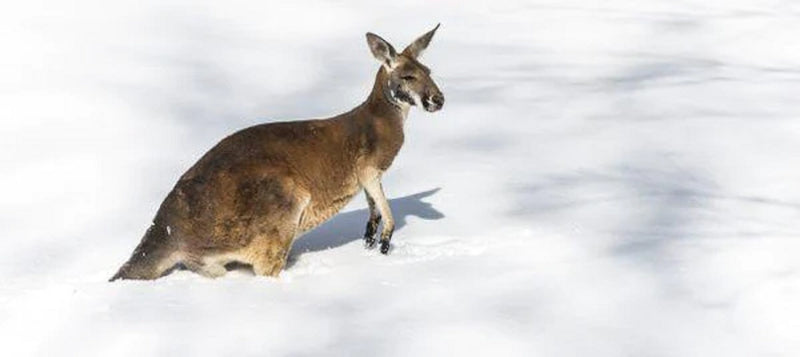Organize Your Upcoming Trip to Witness Snow In Australia with Friends
Organize Your Upcoming Trip to Witness Snow In Australia with Friends
Blog Article
Discover the Remarkable Impacts of Snow in Australia on Neighborhood Ecosystems
Despite its credibility for sun-soaked landscapes, Australia also boasts areas blanketed by snow-- a phenomenon that profoundly influences the nation's unique environments. The protecting buildings of snows protect vegetation and animals among the coldest winters, while the melting snow nurtures rivers and aquatic life. Nonetheless, the genuine marvel lies in how these icy conditions form the nation's biodiversity and nutrient cycles. As we unravel this complex partnership, we discover ourselves treading on untouched premises in Australia's high country.
The Unanticipated Areas of Snowfall in Australia
Although Australia is usually connected with sandy coastlines and sun-scorched landscapes, certain regions surprisingly experience snowfall. The high nation areas of New South Wales, Victoria, and Tasmania are particularly recognized for their winter months snow. The Snowy Mountains in NSW, as an example, obtain abundant seasonal snow, offering a stark comparison to the country's typical warm, arid climate. The Victorian Alps and components of Tasmania also see yearly snowfalls, transforming the landscape into a winter wonderland. These areas are not just anomalies yet indispensable components of Australia's diverse climate system. The existence of snow in these areas dramatically affects regional ecological communities, consequently influencing the nation's unique biodiversity. The specific influence on Australia's distinctive flora will certainly be discussed in the following area.

Just How Snow Impacts Australia's Special Vegetation
While it may seem uncommon, snowfall in Australia plays a crucial function fit the nation's unique plants. The snow-filled winters foster durability in Australian plant varieties. This is particularly obvious in the sub-alpine and towering regions, where snow periodontals and hill plum-pines thrive. These plants have developed to make it through in extreme problems, with snow offering as a safety blanket from rough winds and freezing temperature levels. The snow also adds to the moisture content of the dirt, providing needed hydration for plant throughout the dry summertime. In significance, the snow affects the timing of flowering and seed dispersal, the growth rates, and the survival of numerous plant types, showcasing the intricate interaction in between environment and flora in Australia.

The Adjustments of Australian Fauna to Snowfall
Simply as Australia's plants has actually adapted to the wintery problems, the regional fauna too, show exceptional adjustments to the snowfall. It utilizes the snow as insulation, hibernating in rock gaps underneath the snow to remain warm. The Snow Skink, a types of reptile, alters its colour to white throughout winter season, giving camouflage versus killers.
The Duty of Snow fit Neighborhood Communities
In forming the local communities, the function of snow in Australia is both profound and multilayered. Snow gives an essential water source, feeding rivers and storage tanks as it thaws, thus supporting a range of aquatic life kinds. The presence of snow shapes the view website greenery patterns, pet behavior, and general sustainability of Australia's special communities.

The Future of Snowfall in Australia: Ramifications and forecasts

Provided the crucial role snow plays fit local ecological communities, the future of snowfall in Australia is drawing raising focus from researchers and environmentalists. Existing environment models anticipate a substantial reduction in snowfall due to worldwide warming, with possibly profound influence on neighborhood communities. Less snow might result in reduced water accessibility in alpine regions, detrimentally impacting wild animals habitats and this contact form plant life. It could change the timing of seasonal changes, interfering with the life cycles of lots of indigenous species. The tourism sector, heavily reliant on the wintertime snow period, may additionally face substantial difficulties. As a result, comprehending these predictions and their implications is important to create effective conservation methods, making certain the preservation of Australia's special biodiversity and the sustainability of its economic climate.
Verdict
The role of snow in Australia's communities is pivotal yet frequently overlooked. It serves as a protector, a nurturer, and a shaper of varied alpine types, adding to the richness of Australia's high nation. As climatic patterns continue to move, comprehending the ramifications and possible transformations of these snow-influenced communities is crucial. Therefore, the snow in Australia is more than an all-natural spectacle; it's a vital gamer in the country's environmental story.
In spite of its track record for sun-soaked landscapes, Australia also boasts areas blanketed by snow-- a sensation that exceptionally influences the country's one-of-a-kind communities. It makes use of the snow as insulation, hibernating in rock holes beneath the snow to view website remain cozy - Snow In Australia.In forming the local environments, the function of snow in Australia is both multilayered and extensive. The presence of snow forms the vegetation patterns, pet habits, and total sustainability of Australia's unique ecosystems
Provided the critical role snow plays in shaping regional ecosystems, the future of snowfall in Australia is attracting increasing interest from environmentalists and researchers.
Report this page